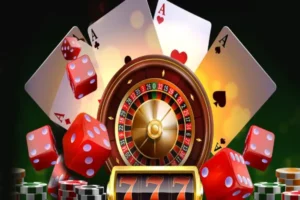Why Tournament Formats Create a Different Kind of Thrill

Tournaments flip the script on casino and betting sessions. In a cash game, you can reload, leave whenever you like, and every chip equals its face value. In a tournament, you buy in once (or on a schedule), chase a shared prize pool, and measure success against a clock and a leaderboard. Survival, momentum, and laddering up the payout sheet create a type of tension you don’t get in standalone bets.
What changes when you add a leaderboard
Tournament chips behave differently from cash chips because of payout curves and elimination. Early on, building a stack increases flexibility; late in the event, a single mistake can erase hours of work. That shift in chip value is why endgame decisions feel sharper and why careful stack management often beats constant aggression.
Formats add visible structure: levels, antes, seat redraws, and a prize ladder posted for all to see. As the field shrinks, pressure rises. Bubble play – those hands just before everyone gets paid – turns into a chess match between aggression and survival. For practical onboarding and device setup if you plan to compete on mobile, you can read more here: read more.
Prize distribution amplifies the thrill. A top-heavy ladder means late risks can pay off dramatically; flatter payouts reward consistency and a steady path through the middle of the field. Either way, your target isn’t a single big hit – it’s outlasting others while choosing the right moments to push.
Structures that shape emotion
Blind or stake levels set the tempo. Short levels force action and create swings; longer levels reward patience and table reads. Re-entry windows let you try again, which changes how some players approach the first hour. Add-ons extend the runway at a known time, often prompting calculated risk right before the break to maximize stack depth afterward.
Bounty and progressive knock-out events add a second reward stream: eliminating opponents. That tweaks decision-making because a close call can be profitable once the bounty value is included. Satellites trade cash prizes for seats into bigger events, so survival becomes the north star – accumulating chips matters until the number of seats is locked, then every extra chip is excess risk.
Shot clocks reduce hesitation and mental fatigue by enforcing a decision cadence. Late registration affects field size and average stack depth, which can change how tight or loose early play feels once you sit down.
Risk, variance, and strategy shifts
Variance is higher in tournaments because you’re competing against the field and the payout curve, not just a single price on a single bet. Chip value becomes nonlinear as you approach pay jumps; a small stack near the bubble can be worth more than its face value if folding into the money is likely. This is why independent chip modeling – estimating tournament equity rather than chip count – matters for push-fold spots and marginal calls.
Bankroll planning should reflect that volatility. A string of early exits can happen even with solid play, so choose buy-ins that allow a realistic sample size. If re-entries are allowed, decide your maximum beforehand to avoid emotional overinvestment. After registration closes, reassess: with fewer or no re-entries left, your edge may come from pressure rather than volume of hands.
A short checklist before you register
- Format clarity: prize ladder shape, re-entry rules, level length, and whether there are bounties or add-ons.
- Field size and skill mix: smaller fields reduce variance; massive fields increase top-end upside with more swing.
- Personal plan: target stack sizes by level, bubble approach (attack or survive), and final-table goals by pay jump.
- Logistics: device or venue reliability, breaks, hydration, and note-taking so decisions stay consistent when pressure spikes.
Why spectatorship and community feel different
Tournaments invite a story arc: from opening hands to bubble tension to a final-table sprint. Railbirds track deep runs, post chip counts, and celebrate ladder climbs. Streamers replay pivotal hands, and highlight reels capture momentum swings in a way cash sessions rarely do. The communal aspect turns private decisions into shared drama, which is part of why players return to these formats even after tough exits.
Summary and takeaways
Tournament formats swap steady, incremental play for staged deadlines and public benchmarks. Leaderboards, payout ladders, and elimination create a feedback loop where stack size, clock pressure, and field position drive choices. If you enjoy measured risk with a visible storyline – early accumulation, bubble calculation, late-stage nerve – tournaments deliver that arc. Pick structures that match your temperament, set bankroll limits that survive the swings, and plan the critical moments in advance. You’ll feel the difference the first time a pay jump squeezes the table and the room goes quiet before the next card falls.






